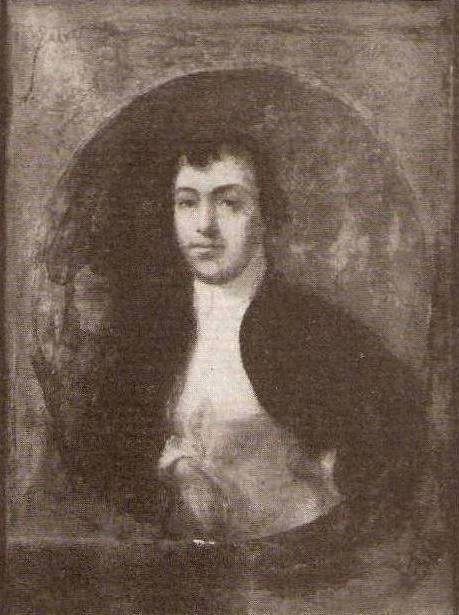Our third First Lady was not a presidential wife, but a daughter. Why? Because our third president, Thomas Jefferson was a widower during the time he occupied the White House. His wife, Martha Wayles Skelton Jefferson, had died in 1781 after only ten years of marriage to him, and twenty years before he took office as president in 1801. His eldest daughter named Martha after her mother, but called “Patsy” by the family, performed the duties of First Lady for him during Jefferson’s two terms in office. Jefferson was the first, but not the last, U.S. president to have someone other than a wife perform the duties of First Lady on his behalf.
Born September 27, 1772, at Monticello, Jefferson’s estate and plantation in Virginia, young Martha was her father’s sole companion in the months after his beloved wife’s death, when he isolated himself from everyone in the world but her. According to her own admissions later, Martha said she was the only witness to many violent outbursts of grief from Jefferson when the two of them would ride their horses into the woods together. For a child of only nine years old, which Martha was at the time, seeing her father like this, along with just losing her mother, must have been a bit traumatic, at least.
However, it also created a close and strong bond between the two of them that lasted Jefferson’s entire life; he always depended on “Patsy” for everything and trusted her completely with his legacy. On her part, she was very careful how she presented that legacy to the world after Jefferson was gone, being just as protective of the public’s perception of him as he had been of her as her father. They were truly each other’s keepers.
Jefferson’s wife asked him on her deathbed to promise to never marry again. He gave this promise and kept it. Most historians believe his wife asked this of him because her own mother died when she was an infant, and she had two step-mothers afterward with whom she did not get along, and did not want her own children to have that experience. In most instances at this time period, when a man with young children became a widower, he looked for another woman to marry right away, so he would have someone to care for the children while he made a living. Jefferson, with his wealth and influence, not to mention hundreds of slaves from both his and his wife’s estates, could afford to have the help on hand to raise his girls, Martha, Mary, and Lucy (Lucy died at age three, leaving only Martha and Mary to survive childhood out of the six children he and his wife had together).
Martha went with Jefferson to Paris in 1784, when he was sent there as an ambassador from the colonies, which were then at war with Great Britain. They stayed until 1789 after the Revolution was over and won, and the new United States recalled their valued statesman home to resume duties to the infant nation. While in Paris, Martha was enrolled in an exclusive Catholic convent school, after Jefferson was assured the school accepted Protestants, and would not require them to convert or give them religious instruction. As a result, Martha (and later, her sister Mary, who joined them a few years after they went to Paris, bringing her ladies maid, Sally Hemmings, with her), received an exceptional education for a woman of her time. Bilingual in English and French, well-versed in literature, philosophy, economics, mathematics, science, and music, she was a valuable and requested prize on the Paris marriage market.
It was only when Martha became interested in Catholicism and declared her intention to become a nun that Jefferson removed her and Mary from the school, and arranged for a private tutor for them.
Martha married her third cousin, Thomas Mann Randolph, Jr. in 1790 when she was 18 years old. Jefferson gave her generous wedding gifts, including a number of Monticello slaves, one of which was Molly Hemmings, Sally Hemmings’s sister.
Martha and Thomas Randolph had twelve children together, eleven of whom survived childhood… a stark contrast to her parents, who lost more than half of their children in childhood.
Though she was busy with the work of raising such a large family, using private tutors at home for her children as most wealthy Virginia planter families did, she and her husband and children spent much time at the White House after Jefferson became president. They visited often, and these visits were extended ones since Jefferson needed her. Whenever foreign dignitaries visited or there were formal state dinners or other events, she acted as hostess and charmed the attendees, which were the main duties of a First Lady at the time. On the rare occasion, a First Lady was needed and Martha was not there, Dolly Madison, wife of Jefferson’s good friend James Madison (and the one who would become the next president) filled in by performing the First Lady duties. However, most of the time, the First Lady during Jefferson’s presidency was Martha. She was devoted to him, even more than to her husband.
Jefferson was equally devoted to Martha. Martha and her husband separated once their oldest few children were grown, though they never divorced. The separation may have been because of Martha’s devotion to her father, though her husband was also an alcoholic with anger management issues, who often caused embarrassment for the family. As Jefferson aged, Martha managed most of his affairs, and eventually became his nurse, as well. Jefferson described his daughter as “the cherished companion of his youth, and the nurse of his old age.” He also wrote that his one regret at the end of his life was knowing he would be parting from her.
After Jefferson died in 1826, Martha inherited Monticello but eventually had to sell it and most of its slaves to pay Jefferson’s heavy debts. She tried to keep the slave families together, as Jefferson had always done, but in the end, it was impossible, and she had to put them all up for auction. The lone exception (besides the children of Sally Hemmings, who Jefferson freed while he was alive) was Sally Hemmings herself, who Martha didn’t officially free, but instead “gave her her time,” (a term meaning retirement back then), and allowed her to go live with one of her sons, who was already a free man.
Martha lived a decade after her father and was buried alongside him, her mother, and her estranged husband in the family cemetery at Monticello, which is still owned by Martha and Mary Jefferson’s descendants today. Near her father is exactly where Martha would want to be.







